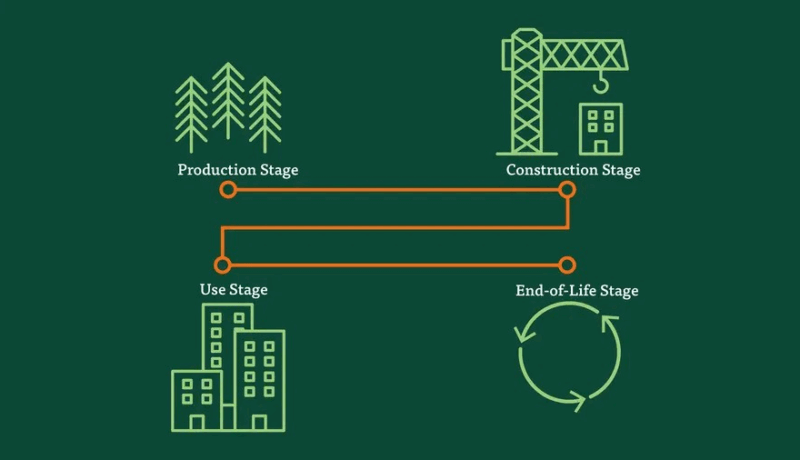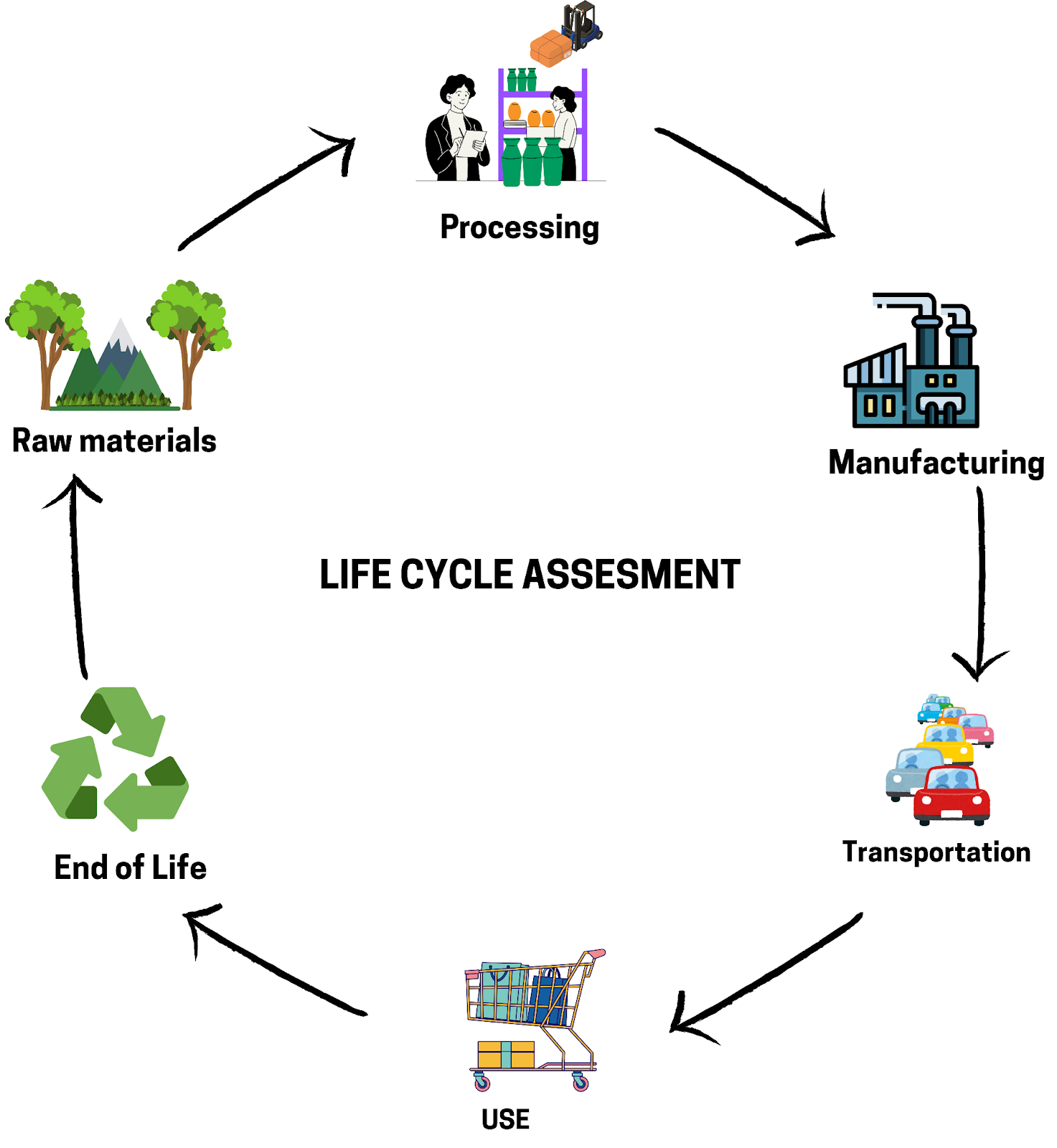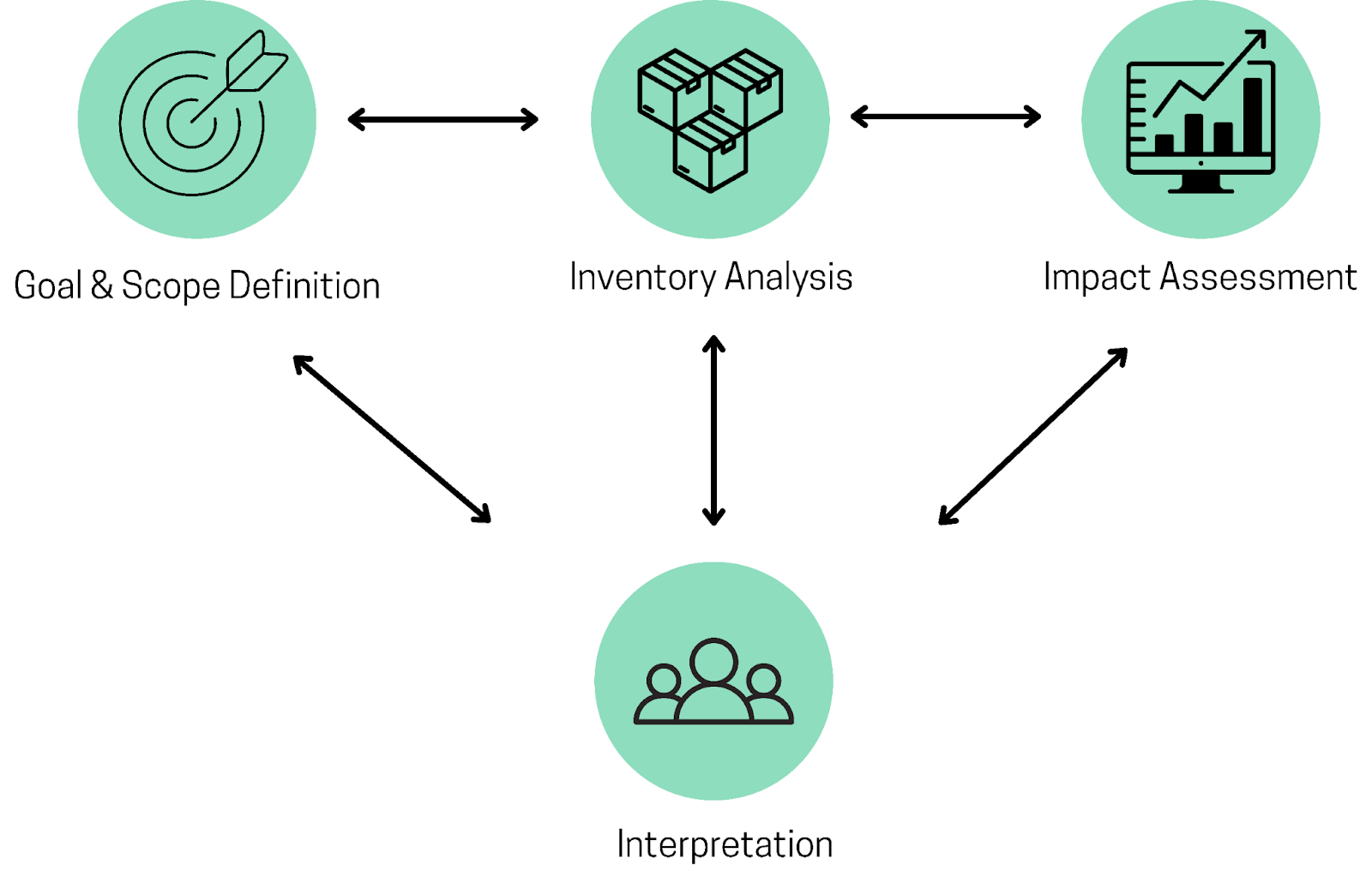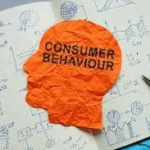
What Is Life Cycle Assessment (LCA)? A Complete Beginner’s Guide to Measuring Environmental Impact
Picture your favorite cotton T-shirt—soft, comfy, and always your go-to. Have you ever wondered about the real environmental cost behind making it?
We often rely on assumptions, limited information or surface-level data to understand the true impact of producing a product.
But what if there were a way to dig deeper?
A method to get a complete view of your T-shirt’s journey, expose wasteful steps, and even quantify the unseen impact, right from scratch!
Now that’s where Life Cycle Assessment (LCA) or LCA comes in.

This beginner-friendly guide introduces the core principles of Life Cycle Assessment and how it helps us understand and reduce the environmental impact of the products we use every day.
Table of Contents
- What Is Life Cycle Assessment—and Why Does It Matter?
- The 4 Phases of LCA
- The Role of LCA in Sustainability
- What You Can Do to Support a Circular Economy
- Wrapping It Up: How LCA Drives Real Change
What Is Life Cycle Assessment and Why Does It Matter?
Life Cycle Assessment (LCA) is a scientific method used to evaluate the environmental impact of a product or service—from raw materials to disposal. It’s a vital tool for sustainability measurement, helping us look at every phase of a product’s life cycle.
LCA examines:
- Raw materials used
- Water usage and energy efficiency
- Emissions and waste
- Environmental and human health impacts
LCA answers the critical question:
“Where are we doing the most environmental damage and how can we do better?”
By running an LCA study, you uncover:
- Opportunities to reduce greenhouse gas emissions:
Life Cycle Assessment (LCA) helps you pinpoint which stages of a product’s life cycle contribute the most to your total greenhouse gas emissions.
These emissions might come from production, transportation, or end-of-life disposal.
By measuring key indicators such as CO₂-equivalent (CO₂e) emissions and Global Warming Potential (GWP), LCA allows you to focus on the biggest emission hotspots first, enabling targeted carbon footprint reduction strategies.
- Ways to increase resource efficiency:
By analyzing material and energy consumption throughout a product’s life cycle, LCA identifies exactly where resources like water, raw materials, or energy are being overused or wasted.
This insight empowers you to select more sustainable materials, optimize energy use, and reduce unnecessary manufacturing steps.
Ultimately, this would help you boost resource efficiency without compromising on product performance.
- Early-stage product development guidance:
Conducting an LCA early in the product design phase provides valuable guidance to develop more sustainable products.
For example, it may reveal that a particular material or design choice leads to excessive emissions or poor recyclability.
This helps your team make smarter, eco-friendly decisions before production even begins, supporting sustainable product innovation.
- Data to support sustainability reporting:
LCA delivers science-based, standardized data essential for accurate corporate sustainability reporting, environmental product declarations (EPDs), and certifications.
By quantifying environmental benefits from recycling and reuse, LCA strengthens your company’s sustainability claims, supports regulatory compliance, and aligns with Environmental, Social, and Governance (ESG) goals.
- Concrete actions for reducing a product’s carbon footprint:
LCA not only highlights environmental challenges but also guides practical solutions.
Whether it involves switching to renewable energy sources, redesigning packaging, changing suppliers, or optimizing logistics, LCA insights help you implement effective steps to lower your product’s overall environmental impact.
- Support for policy development and long-term planning:
Beyond individual products, LCA informs regulatory frameworks and long-term sustainability policies at corporate and governmental levels.
By providing clear, reliable environmental data, LCA helps your business stay aligned with evolving climate laws, industry standards, and sustainability targets while shaping a confident and strategic sustainability roadmap.
The 4 Phases of LCA

LCA is governed by international standards – ISO 14040 and 14044 – which define four key phases of the process.
Remember our T-shirt? From the moment a cotton seed is planted to the day the T-shirt is donated, recycled, or tossed out, every step has an environmental footprint.
Life Cycle Assessment (LCA) helps map out that journey and measure the impact at each stage.
Here’s how it works, phase by phase:
Phase 1: Goal and Scope Definition
Firstly, start by clearly outlining your objectives and setting the system boundaries of your study.
This means clearly defining why you are conducting an LCA on your T-shirt and deciding which stages of its life you want to include in the analysis.
You might choose to look only at production, or cover everything from cotton farming to end-of-life.
Here are your key steps:
- Define the purpose of the LCA (e.g., product comparison or regulatory compliance)
- Identify your target audience
- Set your functional unit (e.g., 1 T-shirt)
- Document any assumptions or limitations
- Draw your system boundaries:
- Cradle to Gate: From raw materials to factory gate
- Cradle to Grave: Full life cycle (production to disposal)
- Cradle to Cradle: Include recycling for circular systems
- Gate to Gate: Focus on one specific production step
These boundaries define what you can include and exclude, ensuring your results are consistent and comparable.
Phase 2: Inventory Analysis (LCI)
Next, move on to collecting all the necessary data related to your T-shirt’s life cycle.
This involves identifying and quantifying every input (like water, energy, and raw materials) and output (such as emissions and waste) across each stage you’ve included in your system boundaries.
This is the data collection phase of your life cycle assessment that allows you to build a complete picture of the environmental exchanges involved.
Collect data on:
- Energy use and water consumption
- Emissions to air, water, and soil
- Raw material inputs and waste outputs
For example, analyzing a T-shirt would require data from cotton farming, fabric processing, dyeing, packaging, and transportation.
You must ensure:
- Use of credible databases or supplier information
- Alignment with your functional unit and system boundaries
- Proper documentation and validation of your data
Phase 3: Life Cycle Impact Assessment (LCIA)
Phase 3 involves utilizing the inventory data you’ve gathered to begin interpreting its environmental significance.
This phase translates raw numbers into meaningful insights by assessing how each input and output contributes to various impact categories such as global warming potential, water pollution, resource depletion, and more.
By doing so, you move from simply knowing what goes in and out of the system to understanding how it affects the planet.
LCIA evaluates how each input/output affects impact categories such as:
- Climate change (via carbon footprint)
- Human health
- Acidification and eutrophication
- Resource depletion
- Water pollution
Steps include:
- Classification: Group inputs/outputs under impact categories
- Characterization: Convert quantities into equivalent impact scores (e.g., kg CO₂e)
This process will highlight your environmental hotspots.
It would give you the clarity needed to prioritize areas for improvement, whether that means switching to organic cotton, using low-impact dyes, or optimizing energy use in producing your T-shirt.
Phase 4: Interpretation
Finally, bring all your findings together to draw meaningful conclusions and recommend next steps.
This phase looks at the results from the inventory and impact assessment to identify key issues, evaluate uncertainties, and suggest improvements.
It helps you understand what the data is really telling you about your T-shirt’s environmental performance, so you can make informed, sustainability-driven decisions.
This final phase brings everything together to deliver actionable sustainability insights.
You must analyze:
- Key hotspots (most damaging processes)
- Reliability of results
- Any uncertainties or data gaps
Conclude with:
- Recommendations to reduce environmental impact
- Comparisons with alternative processes or materials
- Ideas for future improvement
The Role of LCA in Sustainability
We’ve seen how Life Cycle Assessment plays a central role in sustainability measurement by offering a comprehensive view of your product’s environmental footprint.
With every step, it reveals where the most damage happens and where real improvement is possible.
For businesses, this means moving beyond vague sustainability promises. By running an LCA study on a product like your T-shirt, you can take clear, science-based actions that drive measurable change.
Life Cycle Assessment turns broad sustainability goals into clear, measurable strategies grounded in data. This empowers brands to take focused steps toward achieving real progress ultimately leading to a net-zero journey.
What You Can Do to Support a Circular Economy
Conducting a complete LCA is complex—but you don’t have to do it alone.
Untrash helps brands and creators measure and reduce their product footprints by:
- Running full LCA studies
- Highlighting environmental impact categories across different categories
- Offering targeted suggestions to improve energy efficiency and optimise resource usage
- Enabling sustainability communication via QR codes, product packaging, and online platforms
With the help of Untrash Platform, you can turn insights into action and show your customers they’re making a difference too.
Wrapping It Up: How LCA Drives Real Change
From your cotton T-shirt to your reusable coffee cup, every product has a life cycle story. LCA helps us tell your story with science-backed data instead of guesswork.
With LCA and the right support, you can take meaningful steps toward more sustainable products, more responsible systems, and a cleaner future.
By understanding the full impact of every choice, you empower smarter and more effective actions.
And with Untrash, that journey is easier than ever!


